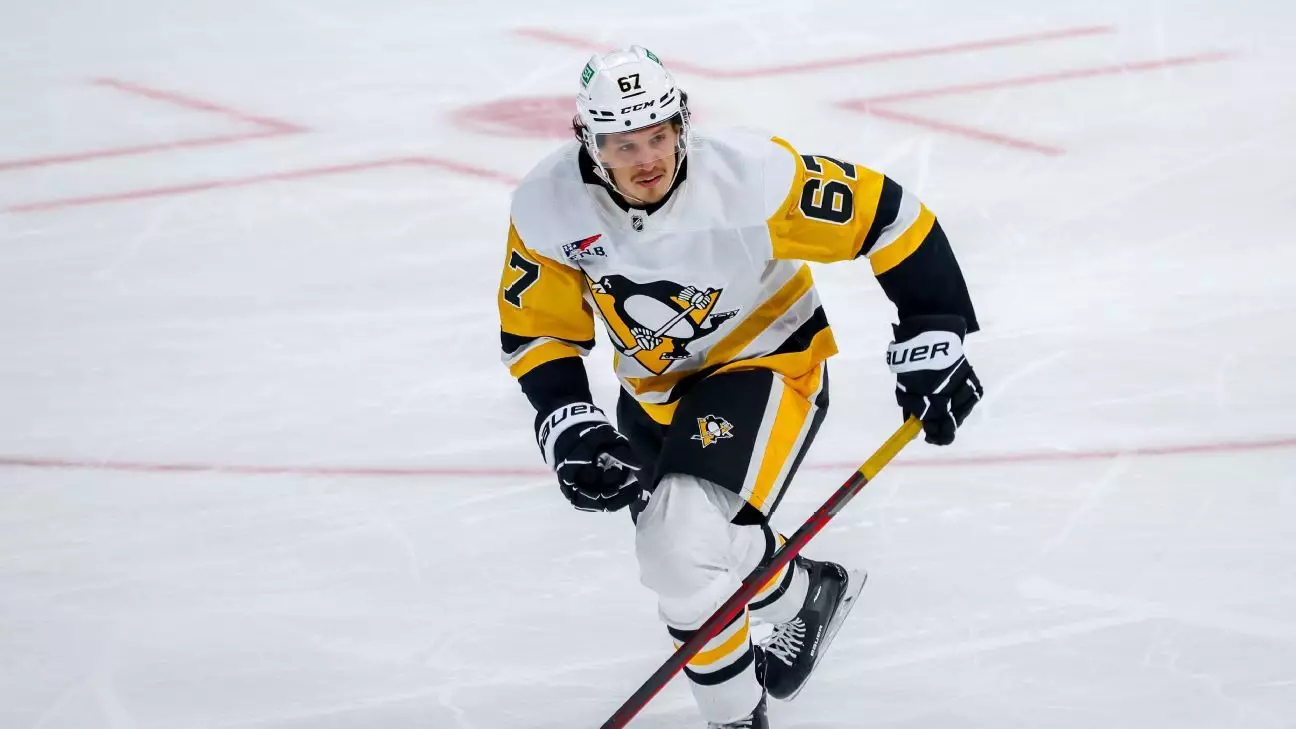With the 4 Nations Face-Off rapidly approaching, the Swedish national hockey team is adapting its roster to address injury concerns while maintaining a competitive edge. The announcement of key player updates has sparked significant interest among hockey fans and analysts alike, as Sweden prepares to face off against some of the world’s best teams in this condensed tournament.
Sweden’s head coach, Sam Hallam, has made the decision to bring in Pittsburgh Penguins forward Rickard Rakell to replace the injured William Karlsson. Rakell, who has been enjoying a standout season with 23 goals and 45 points over 53 games, has demonstrated clear offensive capabilities. However, it is his well-rounded style of play that makes him an invaluable addition to the team. Penguins coach Mike Sullivan praised Rakell for his all-around game, emphasizing his two-way play and dedication to team success. This nuanced understanding of the game, featuring both scoring prowess and defensive responsibilities, reflects a strategic approach that could prove beneficial to Sweden as they head into the competition.
Karlsson’s absence, however, has created a void for the Swedish lineup. The Vegas Golden Knights forward is considered a crucial asset, and his lower-body injury, which has him listed as week-to-week, poses a challenge to Sweden’s offensive depth. Nevertheless, Rakell’s inclusion speaks to the nation’s depth and ability to adapt swiftly to adversity.
As the competition intensifies, Sweden’s main rival, Finland, has made adjustments of its own. The absence of key blue-liners like Miro Heiskanen and Jani Hakanpaa due to injuries has forced Finland to call in new players, Henri Jokiharju and Urho Vaakanainen. Heiskanen’s knee surgery, putting him on a month-to-month recovery, is particularly significant. These developments illustrate how injuries can drastically alter the dynamics of international rosters and also hint at the unpredictability associated with elite-level sports. Sweden and Finland have long enjoyed a fierce rivalry, and fans will be eager to see how these changes may influence the upcoming matchups.
Moreover, the United States is facing its own injury woes, with key players like Quinn Hughes and Zach Werenski dealing with physical setbacks. As teams navigate the complexities of player health, the roster adjustments may become a determining factor in the overall success of each national team during the tournament.
The Canadian team is also grappling with shifts in their lineup. Following the withdrawal of Alex Pietrangelo due to personal health concerns, the search for a replacement has gained urgency. The potential inclusion of veteran Drew Doughty raises questions regarding both experience and fitness levels, especially given his recent recovery from a broken ankle. This situation encapsulates the larger narrative surrounding the tournament—teams must balance skill, experience, and player health while aiming for cohesion and competitive edge.
These changes occurring just weeks before the tournament underline the precarious nature of roster management in international hockey. As countries finalize their teams, discussions surrounding depth and adaptability are front and center.
As practices for the 4 Nations Face-Off commence on February 10, teams will work diligently to create chemistry and strategize for the rigors of competitive play. The tournament, replacing the traditional NHL All-Star Weekend, will serve as both a showcase of talent and a precursor to the 2026 Milan Olympics.
Game dates from February 12 to February 15 will present teams with numerous challenges as they navigate group play in Montreal before heading to Boston for championship contention. With such high stakes, every roster decision made now will have ramifications that extend beyond just this tournament.
The 4 Nations Face-Off represents a crucial opportunity for these national teams, and the outcome will be influenced not just by skill but by how effectively teams can rise up against the challenges presented by injuries and team dynamics. As Sweden adjusts its roster and prepares for the competition, the unpredictable nature of international hockey remains its greatest allure.


Leave a Reply